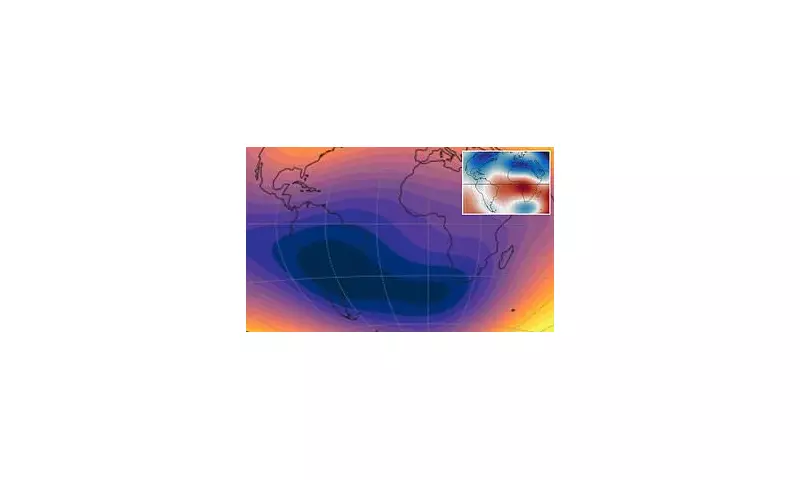
A mysterious and rapidly growing weak spot in Earth's magnetic field has scientists worldwide raising concerns about our planet's protective shield. This significant vulnerability, known as the South Atlantic Anomaly, has expanded dramatically in recent years and now stretches across vast portions of South America and the South Atlantic Ocean.
What is the South Atlantic Anomaly?
The South Atlantic Anomaly represents a substantial dip in Earth's magnetic field strength, creating what experts describe as a 'dent' in our planet's protective bubble. This magnetic weakness allows charged particles from space to penetrate much closer to Earth's surface than anywhere else on the planet.
Recent data from NASA and European Space Agency satellites reveals this anomaly isn't just persisting - it's actively growing and splitting into two separate lobes. This development has significant implications for both technology and human safety in space.
Why Should We Be Concerned?
The consequences of this expanding magnetic weakness are far-reaching:
- Satellites passing through the region experience increased radiation exposure and technical malfunctions
- The International Space Station requires additional shielding when orbiting through this zone
- Astronauts report seeing strange 'shooting stars' in their vision due to radiation effects
- Future space missions may need to reroute to avoid the area entirely
The Science Behind the Phenomenon
Researchers believe this magnetic weakness originates from disturbances deep within Earth's core, particularly beneath southern Africa. Here, a massive reservoir of dense rock creates what scientists call a 'negative magnetic flux' that's weakening the overall field.
As lead researcher Dr. Weijia Kuang from NASA's Goddard Space Flight Centre explains, 'This is a region of minimum field strength where the inner Van Allen radiation belt comes closest to Earth's surface.' This proximity allows high-energy particles to approach within 200 kilometres of Earth's surface.
What Does the Future Hold?
While there's no immediate danger to people on the ground, the long-term implications are significant. Scientists continue to monitor the anomaly closely, using sophisticated computer models to predict its future behaviour and potential impacts on our increasingly technology-dependent world.
The ongoing research highlights the dynamic nature of our planet's magnetic field and reminds us that Earth's protective systems are constantly evolving in ways we're only beginning to understand.





